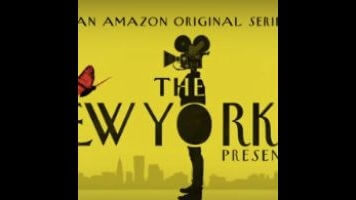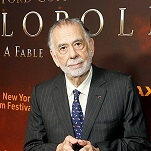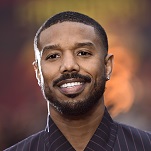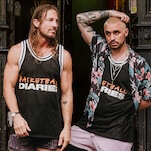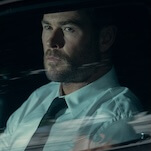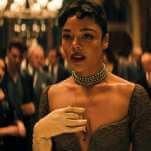One advantage of Amazon and Netflix’s “post an entire TV season all at once” policy is that there’s no real reason to watch a show in order if it’s not serialized to begin with. So here’s a piece of advice: Don’t start with episode one of Amazon’s new series The New Yorker Presents. Go straight to the second installment, which is strong enough to justify the entire project.
Every element of The New Yorker Presents’ second episode—Steve James’ short documentary about junior rodeo riders, the cartoons by Roz Chast and Liana Finck, the report from a decaying Atlantic City, and the illustrated Edwidge Danticat essay about black migration—replicates what it’s like to flip through an especially good New Yorker issue. The half-hour combines whimsy, opinion, and reportage with a strong personal slant, but also sports the urbane reserve that the publication’s known for (and sometimes mocked for).
For a taste of The New Yorker Presents at its weakest, go back to the first episode. (That is, if you haven’t already. It’s been available on Amazon Prime since last January.) The NYP pilot is needlessly showy and often off-model. It opens with a short piece about performance artist Marina Abramovic that focuses mainly on her more shocking pieces—while also leaning heavy on an Abramovic interview featuring distractingly chatty questions. A measured, enlightening Jonathan Demme documentary about embattled biologist Tyrone Hayes goes a long way to redeeming episode one, but a stilted version of a story by humorist Simon Rich (starring Alan Cumming and Brett Gelman) and a poem read by Andrew Garfield both feel like they’re pushing too hard.
Amazon Studios and Alex Gibney’s Jigsaw Productions have produced 10 half-hour episodes for New Yorker Presents’ first season. None are as much of a clunker as the pilot. But only one is as top-to-bottom excellent as episode two. (That would be the extended-length finale, highlighted by a Gibney documentary about pre-9/11 intelligence and a funny short film starring Paul Giamatti as a bloated, coffee-addicted Honoré De Balzac.) Most are a mix of highs and lows, with the latter being mildly but noticeably annoying in comparison to what New Yorker Presents can be.
In episode seven, for example—a themed collection, dubbed “The Food Episode”—a touching vignette about a Harlem soul food cook feels too short, while a companion documentary about the troubled childhood of hot Los Angeles chef Craig Thornton is excessively arty and repetitive. The series is largely defined by these subtle but frustrating fluctuations. The best segments are so outstanding that when an episode jumps to one that’s dull or pointless—or both, as is the case with episode nine’s adaptation of a dry John Kenney short story, starring Charles Grodin and John Turturro—the dip keeps New Yorker Presents from being unreservedly recommendable.
It’s enough to make a person pine for physical media, frankly—and the ability to easily browse. Each NYP episode starts with a table of contents, containing time-codes for where each piece begins. But it’d be nice to be able to select them as desired, as on a DVD.
Because it’d be a shame if the clunkiness of the streaming format prevented people from dialing up some the series’ best segments. Such as:
- An episode three “Talk Of The Town” mini-essay about the unique qualities of the light in Los Angeles, and how it’s affected artists and filmmakers.
- Another episode three standout, a touching and funny adaptation of Miranda July’s short story “Roy Spivey,” about a briefly life-changing encounter with a celebrity.
- An episode four Adam Gopnik essay about the symbolic importance of cars and guns in America.
- An episode eight true crime documentary, about a slick silver thief.
- Another one from episode eight, appreciating the erotic gay art of “Tom Of Finland.”
- An episode nine “Talk Of The Town,” which has a circle of folks swapping anecdotes about their encounters with actor Bill Murray.
In addition to the table of contents, each episode includes two still shots of New Yorker cartoons, along with footage of artists like Chast and Emily Flake drawing them. Seeing each one’s different creative process is almost as much of a must for New Yorker cartoon geeks as the recent HBO documentary about the magazine’s long cartooning history.
There’s also a uniformity of style to The New Yorker presents that sometimes works against it. It would’ve been better if, say, Miranda July had directed her own story, and had brought some of her own style. Director Michael Slovis does a creditable job with “Roy Spivey,” but the flat imagery and wall-to-wall music feels like it was designed to have the film fit in with the rest of the episode, rather than making it as distinctive as it should be. Similarly, the lovable nuttiness of the Simon Rich FXX series Man Seeking Woman proves that his humor can translate to the screen much better than it does here, where it feels bland.
Then again, it’s this similarity between segments that keeps The New Yorker Presents from being just a random anthology of short films. Some of the best parts of NYP don’t really have an analogue with sections of the magazine, necessarily: They’re the interstitial pieces that last two minutes or less, showing scenes of everyday New York life or clips shot around The New Yorker offices. They’re a reminder of the publication’s storied history, and its connection to its namesake city. At its best—which it is more often than not—The New Yorker Presents is a continuation of that legacy, not just an extension of the brand.
